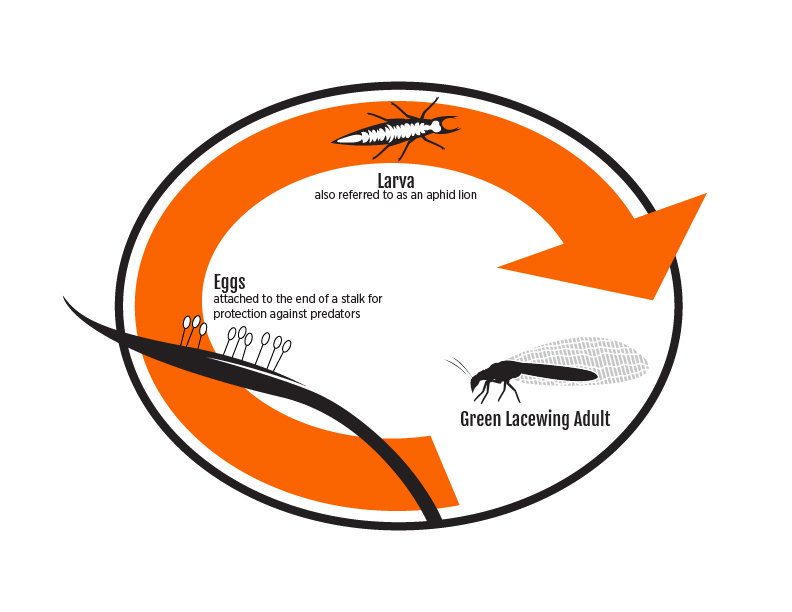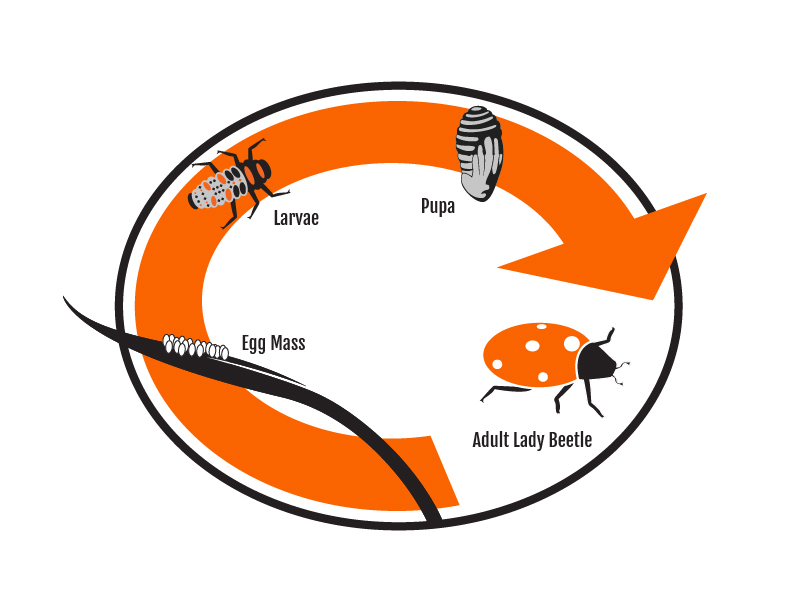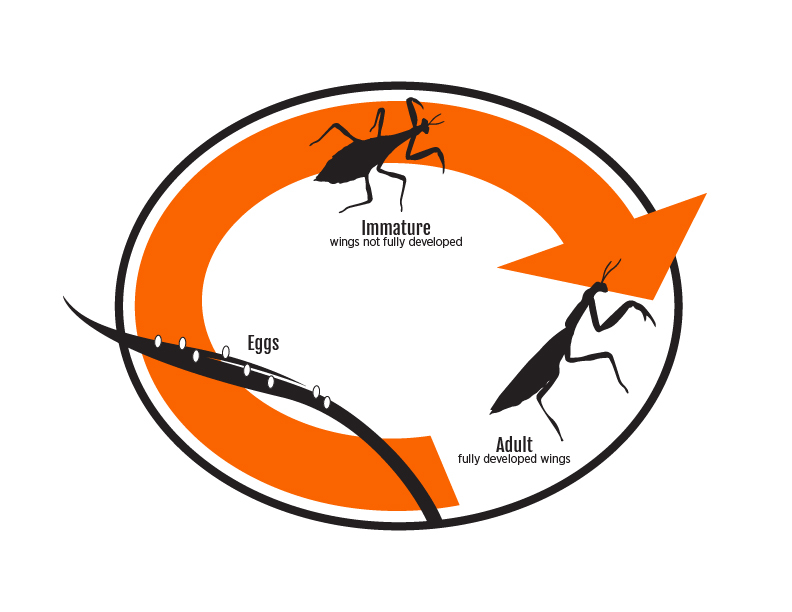Natural Enemies
Green Lacewing
(Neuroptera : Chrysopidae) Adult lacewings are highly mobile and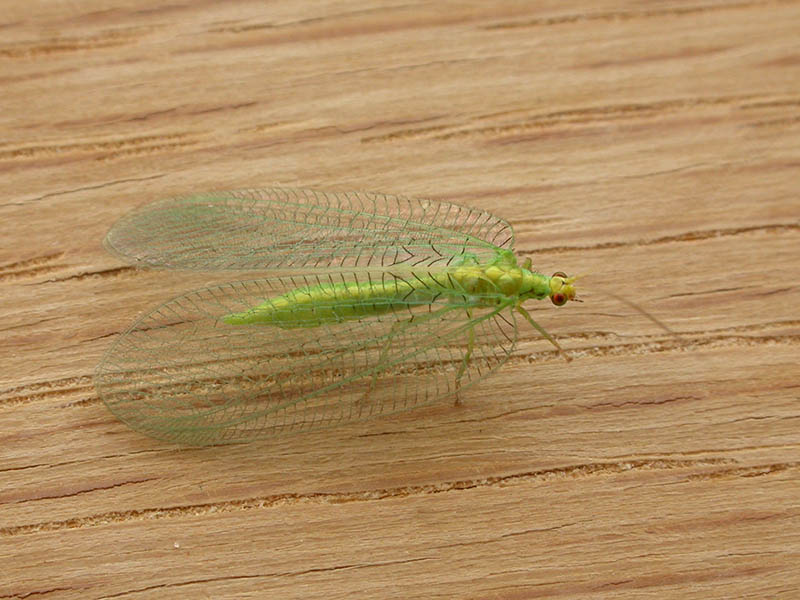 inhabit and reproduce in wheat. Lacewings that inhabit wheat are predaceous only
as larvae. Adults feed on aphid honeydew, nectar, and pollen. Lacewing larvae feed
on a variety of small, soft-bodied arthropods, including aphids, plant bugs, thrips,
mites, and the eggs and larvae of Lepidoptera and Diptera. Lacewings are not considered
to be highly effective at controlling aphids because they lack the prey specificity
usually associated with highly effective aphid predators. However, they contribute
to controlling aphid infestations.
inhabit and reproduce in wheat. Lacewings that inhabit wheat are predaceous only
as larvae. Adults feed on aphid honeydew, nectar, and pollen. Lacewing larvae feed
on a variety of small, soft-bodied arthropods, including aphids, plant bugs, thrips,
mites, and the eggs and larvae of Lepidoptera and Diptera. Lacewings are not considered
to be highly effective at controlling aphids because they lack the prey specificity
usually associated with highly effective aphid predators. However, they contribute
to controlling aphid infestations.
Lady Beetles
(Coleoptera : Coccinellade) Lady beetles occur in wheat fields 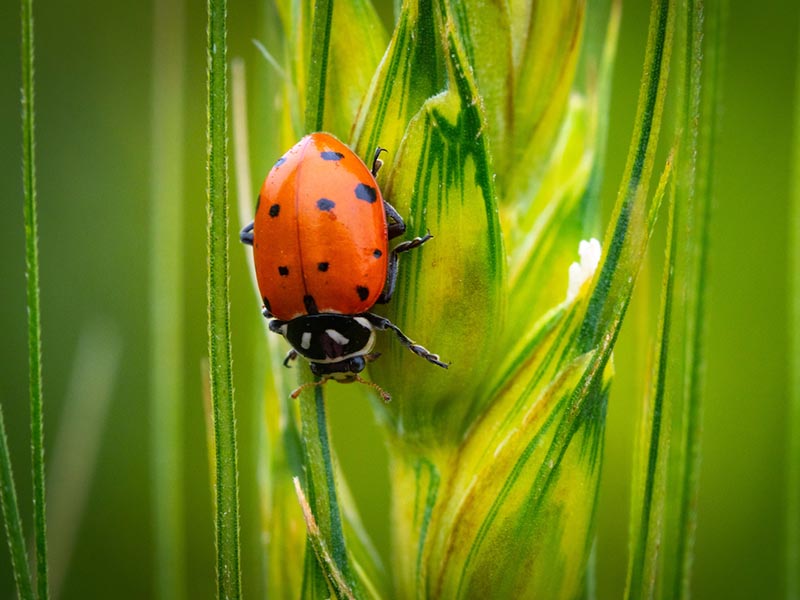 throughout the United States. They prey primarily on aphids (including the greenbug)
but may also eat spider mites, other insect larvae and insect and mite eggs. Because
of the wide climatic and geographic conditions under which wheat is grown, and the
complexity of predator-prey relationships, general statements about coccinellid impact
on aphid infestations are difficult to make. Under favorable conditions coccinellids
are voracious predators and can drive an aphid infestation to extinction.
throughout the United States. They prey primarily on aphids (including the greenbug)
but may also eat spider mites, other insect larvae and insect and mite eggs. Because
of the wide climatic and geographic conditions under which wheat is grown, and the
complexity of predator-prey relationships, general statements about coccinellid impact
on aphid infestations are difficult to make. Under favorable conditions coccinellids
are voracious predators and can drive an aphid infestation to extinction.
Nabid
(Hemiptera : Nabidae) Nabids (damsel bugs) feed on small, soft-bodied 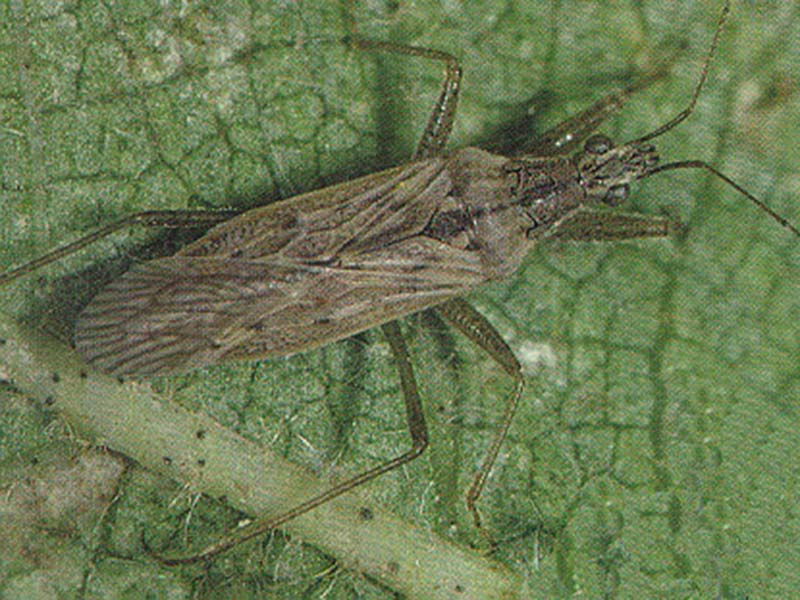 arthropods in wheat fields. Both adults and immatures are predaceous. Nabids are widely
distributed in wheat and other crops, and are frequently among the most abundant predatory
insects in wheat fields. Adult nabids are winged and highly mobile. Nabids are not
considered highly effective at controlling aphids because they lack the prey specificity
associated with highly effective aphid predators. However, they contribute to the
control of aphid infestations.
arthropods in wheat fields. Both adults and immatures are predaceous. Nabids are widely
distributed in wheat and other crops, and are frequently among the most abundant predatory
insects in wheat fields. Adult nabids are winged and highly mobile. Nabids are not
considered highly effective at controlling aphids because they lack the prey specificity
associated with highly effective aphid predators. However, they contribute to the
control of aphid infestations.
Parasitic Wasp
(Hymenoptera : Aphidiidae) The parasitic wasp Lysiphlebus is the most important biocontrol agent of the greenbug
in wheat. Mummies produced by Lysiphlebus from the 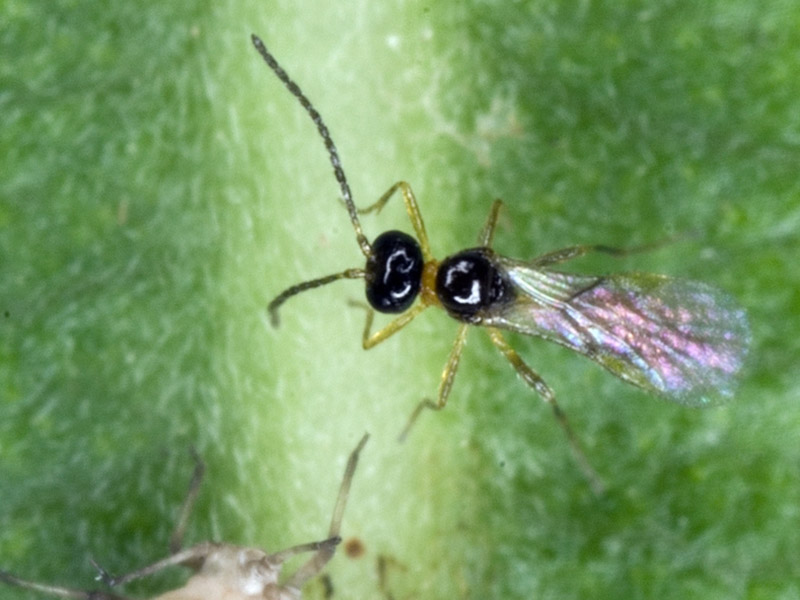 aphid it killed are either tan or brown depending on which species of aphid it parasitized.
Tan mummies are formed from greenbugs while brown mummies are formed from bird cherry-oat
aphids. This parasitoid can be effective at maintaining greenbug infestations below
economically damaging levels. Researchers at OSU and USDA-ARS have recently determined
thresholds for parasitism that lead to successful control of greenbug infestations
in wheat fields in Oklahoma.
aphid it killed are either tan or brown depending on which species of aphid it parasitized.
Tan mummies are formed from greenbugs while brown mummies are formed from bird cherry-oat
aphids. This parasitoid can be effective at maintaining greenbug infestations below
economically damaging levels. Researchers at OSU and USDA-ARS have recently determined
thresholds for parasitism that lead to successful control of greenbug infestations
in wheat fields in Oklahoma.
Photo courtesy of: David Cappaert, Bugwood.org

